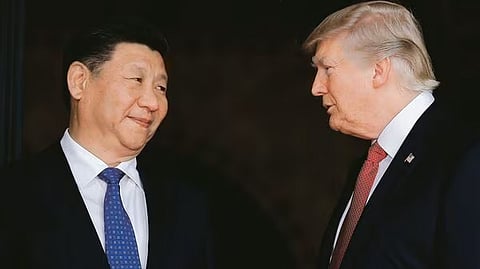

The US and China have reached a preliminary framework for a trade deal, easing fears of a full-scale global trade war just days before leaders Donald Trump and Xi Jinping are scheduled to meet.
The agreement, announced on the sidelines of the ASEAN summit in Malaysia, is expected to remove the threat of 100 percent tariffs on Chinese imports from November 1 and to include a final resolution on the sale of TikTok in the US.
US Treasury Secretary Scott Bessent said the framework reflects significant progress after months of heightened trade tensions between the two economic superpowers, triggered by Trump’s “liberation day” tariff announcement in April. He added that China has agreed to delay export controls on minerals critical to fighter jets, smartphones, and electric vehicles for a year as part of the truce.
China’s top trade negotiator, Li Chenggang, described the outcome as a “preliminary consensus,” noting that both sides will now complete internal approval processes. Li acknowledged the US had taken a “tough” stance, requiring intense consultations and constructive exchanges to reach a potential resolution.
The deal significantly reduces the risk of an all-out trade conflict that had threatened car production across Europe and the UK. It also addresses Beijing’s earlier measures, including export controls on rare earth minerals—which are vital for electronic components in vehicles—and a halt on US soya bean imports, with China being the largest US soya bean customer.
Bessent said the framework provides a strong foundation for Thursday’s face-to-face discussions between Trump and Xi. He expects the tariff truce to extend beyond its November 1 expiry and anticipates that China will resume substantial US soya bean purchases after sourcing crops from Brazil and Argentina in September. US farmers, he noted, should view the framework positively for both the current and future seasons.
US Trade Representative Jamieson Greer highlighted that both sides have agreed to pause certain punitive measures, creating opportunities for greater access to rare earths from China and improved trade balance through US exports.
The US also points to potential progress with Brazil. Following a “positive” meeting between Trump and Brazilian President Luiz Inácio Lula da Silva, both nations’ teams are set to begin discussions immediately to address tariffs and other trade-related issues.
Trade tensions between the US and Brazil had escalated in August when Trump raised tariffs on most Brazilian imports from 10 per cent to 50 per cent, linking the move to what he described as a “witch-hunt” against former President Jair Bolsonaro.